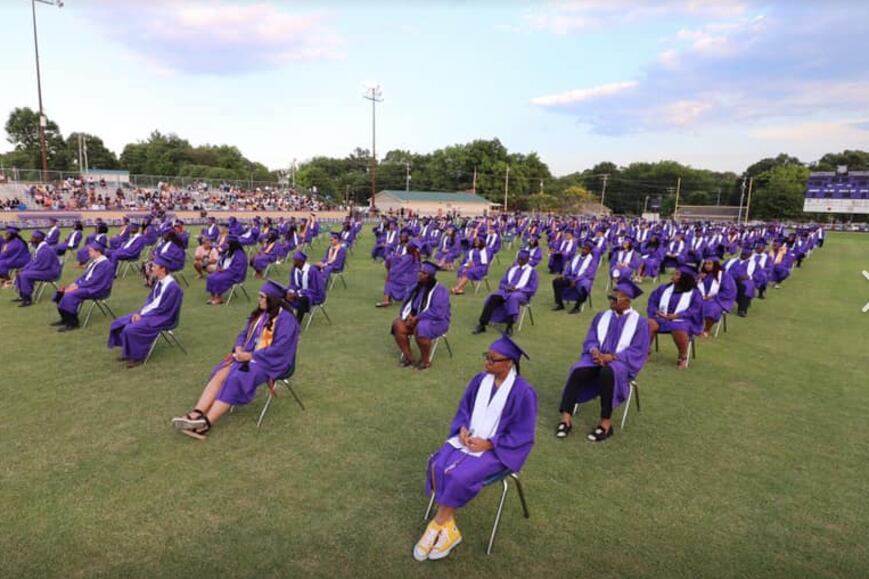Tennessee’s steady march to lift its graduation rate has taken a step backwards for the first time since 2013, even as the state relaxed requirements for the Class of 2020 to receive their diplomas during the coronavirus pandemic.
Data released this week by the state education department showed about 89.6% of public high school seniors earned their diplomas within four years. That’s down by just one-tenth of a percentage point from the record-high rate set by the Class of 2019. Still, the dip is noteworthy because of the state’s steady climb by almost 4 percentage points in the last decade.
The data is among the first measurable academic information published in Tennessee since COVID-19 disrupted schooling statewide. (Find our school-by-school list at the bottom.)
Many observers were surprised by any decline. The academic year was only a few months from completion when the pandemic hit. The state Board of Education also sought to accommodate this year’s graduating seniors by reducing the number of required credits from 22 to 20 and holding them harmless if they did not get to take the required ACT or SAT college entrance exams.
“Any time you go backwards, I’m concerned,” said JC Bowman, executive director of Professional Educators of Tennessee. “I’m especially concerned about the widening gap between white and Black students. We need to take a hard look at cause and effect and what we can do to stem that regression.”
Among the Class of 2020, white students raised their graduation rate by a half percentage point to 93.2%, while the rate for Black students fell by the same amount to 83%. The rate for Hispanic students decreased by 1.7% to 82.4%.
And for students learning the English language, the percentage of graduating seniors slid by more than 3 percentage points to 68.6%.
David Mansouri, president and CEO of the State Collaborative on Reforming Education, called the pattern “very troubling.”
“[This] raises questions about how well students from historically underserved groups were doing last spring while Tennessee schools were closed for weeks,” Mansouri said on Tuesday. “The lack of support from in-person schooling may well have contributed to the lowered graduation rates for English learners, Hispanic students, and Black students.”
That reasoning was echoed on Wednesday in a statement issued by the education department.
“Each year, there is a critical time period from around March through August when schools provide supports to students to help them complete credits and finish up graduation requirements,” the statement said. “This year, in those critical months, there were significant COVID-19 disruptions that may have impacted how students received essential supports, just like they may have impacted the dip in post-secondary enrollment.”
The downward trend is reflected in the latest graduation data from three of the state’s four largest school systems.
Shelby County Schools had the largest downturn, going from 79.3% to 77.7%. Declines were much smaller in Metropolitan Nashville (down .1% to 82.3%) and Knox County (down .2% to 91%). Only Hamilton County saw its graduation rise slightly to 87%, marking a fourth straight year of increases in the Chattanooga area.
Education officials in Memphis said the decline by the state’s largest district mirrors statewide trends, and that the data won’t be used in school or district evaluations this year. They also noted that seven of Shelby County Schools’ 28 district-run high schools improved their graduation rates, while three others had 95% or more of their seniors graduate on time.
Tennessee has pushed to get more students graduated from both high school and a postsecondary school. In 2013, former Gov. Bill Haslam launched a “Drive to 55” initiative to get 55 percent of Tennesseans equipped with a college degree or certificate by the year 2025. His successor, Gov. Bill Lee, has emphasized equipping more students with vocational and technical skills.
Below, find your high school’s graduation rate in our searchable, sortable list.
Editor’s note: This story has been updated to include a statement from the Tennessee Department of Education.





